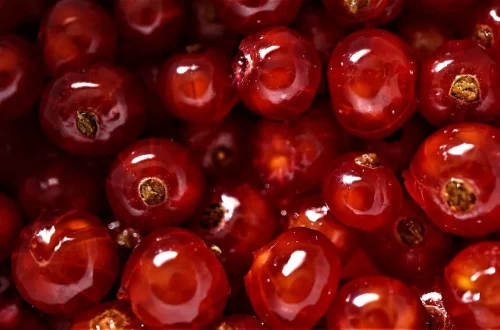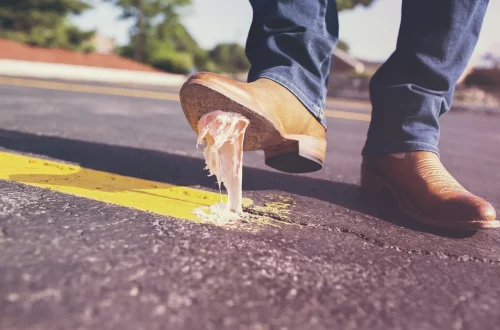
How Many Ounces Are in 180 Grams? A Simple Conversion Guide
When it comes to cooking and baking, precision is key. Measurements play a crucial role in achieving the desired flavor and texture of your dishes. For many home cooks and professional chefs alike, the conversion between grams and ounces can be particularly confusing, especially when a recipe lists ingredients in different units. This is particularly true for those who are accustomed to using the metric system versus those who prefer the imperial system.
Understanding how to convert between these two units of measurement can save time and ensure that recipes turn out as intended. For instance, if you come across a recipe that calls for 180 grams of an ingredient, knowing how to quickly convert that into ounces can help you gather your ingredients without delay.
The significance of accurate measurement extends beyond just cooking; it also applies to nutrition and health. Many dietary guidelines and nutritional information are expressed in grams or ounces, making it essential to grasp these conversions for better meal planning and dietary choices. Whether you are managing a specific dietary requirement or simply want to enhance your cooking skills, mastering the art of conversion will serve you well in the kitchen and beyond.
Understanding Grams and Ounces
Grams and ounces are both units of mass commonly used in cooking and baking, but they belong to different measurement systems. Grams are part of the metric system, which is used by most countries around the world. This system is based on units of ten, making it straightforward for conversions and calculations. On the other hand, ounces are part of the imperial system, which is primarily used in the United States and a few other countries.
One of the key differences between grams and ounces is how they are utilized in recipes. Ingredients can vary widely in density, which means that converting from grams to ounces isn’t always a straightforward process. For example, a gram of flour will have a different volume than a gram of sugar. This variability necessitates a more nuanced understanding of conversions and measurements.
To clarify, one ounce is approximately equal to 28.35 grams. Therefore, to convert grams to ounces, you would divide the number of grams by 28.35. Conversely, to convert ounces to grams, you multiply the number of ounces by 28.35. It’s also important to note that some kitchen scales allow you to switch between metric and imperial measurements, which can simplify the process significantly.
By familiarizing yourself with these basic conversions, you can approach new recipes with confidence, ensuring that you measure ingredients accurately, regardless of the unit of measurement used. This foundational knowledge will not only make your cooking experience more enjoyable but also yield better results in your culinary endeavors.
How to Convert Grams to Ounces
Converting grams to ounces is a skill that every cook should have in their repertoire. To convert 180 grams into ounces, you will need to use the conversion factor mentioned earlier: one ounce equals approximately 28.35 grams.
Using this conversion factor, the calculation for converting 180 grams to ounces would be straightforward. You simply divide 180 by 28.35. When you perform this calculation, you find that 180 grams is approximately 6.35 ounces.
This conversion is crucial, especially when dealing with recipes that require precise measurements. For instance, if a recipe calls for 180 grams of a specific ingredient, knowing that this equals 6.35 ounces allows you to measure accurately, ensuring that your dish turns out as intended.
It can be helpful to keep a conversion chart handy in your kitchen, especially if you frequently use recipes that list ingredients in different units. Many cooking apps and websites also feature built-in conversion tools that can make this process even simpler.
Moreover, it’s worth noting that while precise measurements are important, slight variations in ingredient amounts can sometimes lead to different results in cooking and baking. For example, if you use 6 ounces instead of 6.35 ounces of flour, you may not notice a drastic difference in your recipe. However, for more delicate recipes, such as soufflés or macarons, precision becomes even more critical.
Therefore, having a solid grasp of how to convert grams to ounces will not only streamline your cooking process but also enhance your overall culinary success.
Common Ingredient Conversions
Understanding how different ingredients convert from grams to ounces is essential for any cook. Different ingredients have varying densities, which means that 180 grams of one ingredient may not occupy the same volume as 180 grams of another. Here are some common conversions that can help you in your cooking endeavors.
For example, 180 grams of all-purpose flour is roughly equivalent to about 6.35 ounces. In contrast, 180 grams of granulated sugar converts to approximately 6.35 ounces as well. However, the same weight of butter, which is denser, would convert to around 6.35 ounces, but it can vary slightly depending on whether it’s packed or softened.
Another common ingredient, water, is easy to convert since 180 grams of water is exactly 6.35 ounces. This straightforward relationship makes it simpler to measure liquids, as they typically have a uniform density.
When it comes to denser ingredients like honey or syrup, the conversion remains consistent, but the texture and viscosity can complicate measuring. For instance, 180 grams of honey would still be roughly 6.35 ounces, but you may require a different measuring technique to ensure accuracy.
These conversions can be particularly useful when adapting recipes from different regions or altering serving sizes. Many classic recipes have been handed down through generations and may not always align with current measurement standards. By understanding these conversions, you can modify recipes confidently and maintain the integrity of the dish.
Additionally, it’s beneficial to have a kitchen scale that can switch between grams and ounces, as this tool can make measuring ingredients much more straightforward.
The Importance of Accurate Measurements in Cooking
Accurate measurements are fundamental in cooking and baking. Unlike other forms of cooking that allow for improvisation, baking is a science that requires precision. A small deviation in the amount of an ingredient can drastically alter the final product, leading to undesired textures or flavors.
For instance, in baking, the balance between dry and wet ingredients is crucial. If you use too much flour, your cake may turn out dry and crumbly. Conversely, if you don’t use enough, it may collapse or not rise properly. Therefore, understanding how to convert measurements accurately ensures that you are adding the correct amounts of each ingredient.
Furthermore, accuracy is vital for those who are tracking their nutritional intake. Many health-conscious individuals rely on precise measurements to manage their diets effectively. Being able to convert grams to ounces and vice versa can help maintain dietary goals, whether they involve weight loss, muscle gain, or managing health conditions.
When cooking, especially when working with unfamiliar recipes or cuisines, taking the time to measure accurately can lead to a more enjoyable cooking experience. It allows for consistency in results, helping you replicate successful dishes over time.
In summary, precise measurements in cooking and baking not only enhance the quality of your dishes but also help in achieving your culinary goals and nutritional needs. By mastering conversions between grams and ounces, you can approach cooking with confidence and creativity.
In conclusion, while this guide provides essential insights into converting grams to ounces, it is important to remember that cooking is as much an art as it is a science. Experimenting with flavors, textures, and ingredients can lead to delightful discoveries in the kitchen. Always trust your senses and enjoy the process of creating delicious meals.
*This article is for informational purposes only and is not intended as medical advice. For any health concerns, always consult with a qualified healthcare provider.*




